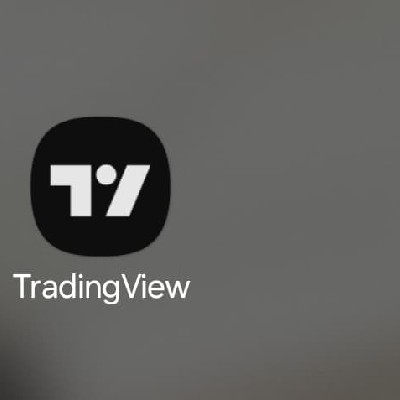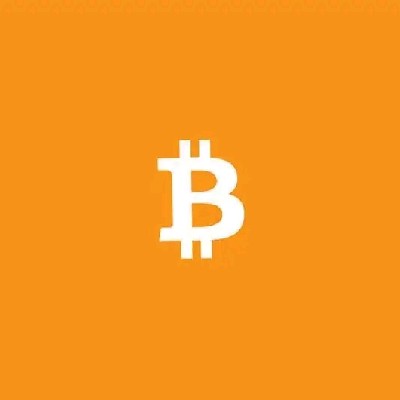


Portal PreisPORTAL
PORTAL zu EUR Umrechner
Wie denken Sie heute über Portal?
Über Portal (PORTAL)
Was ist Portal?
Portal ist eine Web3-Gaming-Plattform, die das GameFi-Ökosystem über verschiedene Blockchain-Netzwerke hinweg vereinheitlichen soll. Es zielt darauf ab, ein allgemeines Problem in der Welt der Blockchain-Spiele zu lösen: Während jede Blockchain ihre eigenen Spiele hat, die ihren Coin-Inhabern zugute kommen und neue Spieler anziehen, kann diese Fragmentierung für Spieler, die an Spielen auf verschiedenen Blockchains interessiert sind, unbequem sein. Portal bietet eine Lösung, indem es ein nahtloses Spielerlebnis bietet, das es den Nutzern ermöglicht, über mehrere Blockchain-Umgebungen hinweg zu spielen, Transaktionen durchzuführen und Kontakte zu knüpfen, ohne sich mit den Komplexitäten jedes einzelnen Ökosystems auseinandersetzen zu müssen.
Die Kernidee hinter Portal ist es, die Barrieren zu beseitigen, die Spieler bei der Interaktion mit verschiedenen Blockchain-Gaming-Plattformen haben. Durch die Integration dieser unterschiedlichen Umgebungen ermöglicht Portal den Spielern den Zugriff auf ein breiteres Spektrum an Spielen, die Einbindung in eine größere Community und ein kohärenteres und angenehmeres Spielerlebnis.
Ressourcen
Offizielle Dokumente: https://portalxyz.nyc3.cdn.digitaloceanspaces.com/Portal_Whitepaper.pdf
Offizielle Website: https://www.portalgaming.com/
Wie funktioniert Portal?
Portal arbeitet mit seinem universellen Gaming-Token PORTAL, der die Interaktion in verschiedenen Spielumgebungen vereinfacht. Dies bedeutet, dass die Spieler nicht mehr mit den Schwierigkeiten des Chain-Switching oder dem Erwerb von Tokens verschiedener Blockchains konfrontiert werden. Mit Portal werden der Zugang zu den Spielen und die Transaktionen innerhalb der Gaming-Community verschlankt, was reibungslosere Interaktionen und Zahlungen ermöglicht. Diese Optimierung verbessert das gesamte Blockchain-Spielerlebnis und macht es für Spieler auf verschiedenen Plattformen zugänglicher und angenehmer.
Was ist PORTAL Token?
PORTAL ist der Haupt-Token der Portal-Plattform und erleichtert Transaktionen, Zugang und soziale Interaktionen innerhalb des Netzwerks. Er dient als primäres Medium für Zahlungen, Belohnungen und andere potenzielle Anwendungsfälle und gewährleistet ein einheitliches und effizientes Spielerlebnis. Darüber hinaus ist die Verteilung der PORTAL-Belohnungen so konzipiert, dass alle Beteiligten, einschließlich der Spieler, der Entwickler, der Community durch eine Treasury und der Node-Validierer, gleichberechtigt sind. PORTAL verfügt über einen Gesamtangebot von 1 Milliarde Tokens.
Wodurch wird der Preis von Portal bestimmt?
Der Preis des PORTAL-Tokens wird, wie bei jeder Kryptowährung, von einer Vielzahl von Faktoren beeinflusst, die die Nachfrage, den Nutzen und die Marktstimmung im Blockchain- und Web3-Sektor widerspiegeln. Die Dynamik von Angebot und Nachfrage, die von der Nutzerakzeptanz, der Spielintegration und der Token-Knappheit bestimmt wird, ist für die Bewertung von grundlegender Bedeutung. Investoren und Enthusiasten beobachten Kryptowährungstrends, historische Charts und die neuesten Nachrichten genau, um ihre Entscheidungen zu treffen, und verlassen sich oft auf Kryptowährungsanalysen und PORTAL-Kursvorhersagen, um ihr Potenzial als solide Investition zu beurteilen. Die Marktvolatilität, die von allgemeinen wirtschaftlichen Faktoren, regulatorischen Änderungen und Sicherheitsbedenken beeinflusst wird, spielt ebenfalls eine entscheidende Rolle bei den Kursschwankungen des Tokens. Da sich die Blockchain-Gaming- und Web3-Bereiche weiterentwickeln, können die neuesten Entwicklungen und Kryptowährungs-Akzeptanzraten den PORTAL-Preis erheblich beeinflussen, so dass es für Investoren wichtig ist, über diese Trends informiert zu bleiben, um fundierte Vorhersagen über die besten Krypto-Investitionen für 2024 und darüber hinaus zu treffen.
Wer sich für das Investieren oder Trading mit Portal interessiert, wird sich vielleicht fragen: Wo kann man PORTAL kaufen? Sie können PORTAL an führenden Börsen wie Bitget kaufen, die eine sichere und nutzerfreundliche Plattform für Krypto-Enthusiasten bieten.
Verwandte Artikel über Portal:
Portal (PORTAL): Gaming-Integration über Chains und Plattformen hinweg
AI-Analysebericht über Portal
Live Portal Preis heute in EUR
Portal Preisverlauf (EUR)
 Niedrigster Preis
Niedrigster Preis Höchster Preis
Höchster Preis 
Was ist der höchste Preis von Portal?
Was ist der niedrigste Preis von Portal?
Portal Preisvorhersage
Wie hoch wird der Preis von PORTAL in 2026 sein?
Wie hoch wird der Preis von PORTAL in 2031 sein?
FAQ
Wie hoch ist der aktuelle Preis von Portal?
Wie hoch ist das 24-Stunden-Trading-Volumen von Portal?
Was ist das Allzeithoch von Portal?
Kann ich Portal auf Bitget kaufen?
Kann ich mit Investitionen in Portal ein regelmäßiges Einkommen erzielen?
Wo kann ich Portal mit der niedrigsten Gebühr kaufen?
Portal Nachrichten
Portal-Updates
Was ist Gomble (GM)? Das Web3-Spiel, bei dem sich das Spielen mit Freunden auszahlt
Bitget kurz und bündig
Plume (PLUME): Die Blockchain für Real World Asset Finance (RWAfi)
Bitget LaunchX: Eine maßgeschneiderte frühe Token-Verteilung für Nutzer und Projekte
Layer3 (L3): Revolutionierung von Krypto-Erlebnissen mit interaktivem Engagement
Bitget news - TRUMP IST DIE BESTE WAHL FÜR BITCOIN?!
Lifeform (LFT): Digitale Identität für das Web3-Zeitalter
Der ultimative Leitfaden, um Teamkapitän in Bitgets KCGI 2024 zu werden
CatGPT (CATGPT): Das Schnurren der Macht entfachen
Ness LAB (NESS): Pionierarbeit für die Zukunft der Blockchain und der Informationswirtschaft
Portal Markt
Portal Bestände nach Konzentration
Portal Adressen nach Haltezeit

Globale Portal Preise
- 1
- 2
- 3
- 4
- 5
Wie man Portal(PORTAL) kauft

Erstellen Sie Ihr kostenloses Bitget-Konto

Verifizieren Sie Ihr Konto

Portal in PORTAL konvertieren
PORTAL-Perpetual-Futures traden
Nachdem Sie sich erfolgreich bei Bitget angemeldet und USDT oder PORTAL Token gekauft haben, können Sie mit dem Trading von Derivaten beginnen, einschließlich PORTAL Futures und Margin-Trading, um Ihr Einkommen zu erhöhen.
Der aktuelle Preis von PORTAL ist €0.06061, mit einer 24h-Preisänderung von +8.48%. Trader können von Futures profitieren, indem sie entweder Long- oder Short-Positionen eingehen.
Schließen Sie sich PORTAL Copy-Trading an, indem Sie Elite-Tradern folgen.
Neue Listings auf Bitget
Mehr kaufen
Wo kann ich Portal (PORTAL) kaufen?
Videobereich - schnelle Verifizierung, schnelles Trading

PORTAL zu EUR Umrechner
PORTAL Ressourcen
Portal Bewertungen
Bitget Insights




Verwandte Assets
Zusätzliche Informationen über Portal
Coin-Übersicht
Coin bezogen
Trading bezogen
Traden
Earn


































Portal Soziale Daten
In den letzten 24 Stunden betrug der Stimmungswert in den sozialen Medien für Portal 3, und die Stimmung in den sozialen Medien in Bezug auf den Preistrend von Portal war Bullisch. Der Gesamt-Social-Media-Score von Portal war 0, was den 356 unter allen Kryptowährungen einnimmt.
Laut LunarCrush wurden Kryptowährungen in den letzten 24 Stunden insgesamt 1,058,120 in den sozialen Medien erwähnt, wobei Portal mit einem Häufigkeitsverhältnis von 0.01% erwähnt wurde und unter allen Kryptowährungen den Rang 349 einnimmt.
In den letzten 24 Stunden gab es insgesamt 391 einzigartige Nutzer, die über Portal diskutierten, mit insgesamt Portal Erwähnungen von 69. Im Vergleich zum vorangegangenen 24-Stunden-Zeitraum hat sich jedoch die Zahl der einzelnen Nutzer Anstieg um 10% und die Gesamtzahl der Erwähnungen Rückgang um 45% verändert.
Auf Twitter gab es in den letzten 24 Stunden insgesamt 0 Tweets, in denen Portal erwähnt wurde. Davon sind Bulllisch für Portal, 0% Bärisch für Portal, und 100% sind neutral für Portal.
Auf Reddit gab es in den letzten 24 Stunden 0 Beiträge, in denen Portal erwähnt wurde. Im Vergleich zum vorherigen 24-Stunden-Zeitraum hat sich die Anzahl der Erwähnungen Rückgang um 0% erhöht.
Übersicht über alle sozialen Aspekte
3